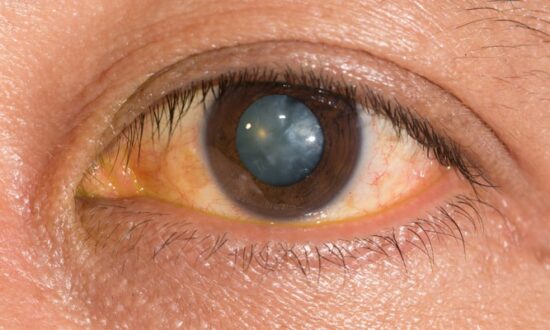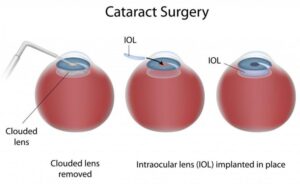
As we age, our bodies undergo various changes, and our eyes are no exception. Cataracts, a common eye condition, can cloud our vision and hinder daily activities. Let’s delve into what cataracts are, their causes, and the available treatment options to restore clear vision.
Cataracts refer to the clouding of the eye’s natural lens, located behind the iris and pupil. The lens plays a crucial role in focusing light onto the retina, allowing us to see clear images. Over time, proteins in the lens may start to clump together, forming cloudy areas. These gradually grow larger, obstructing the passage of light. This clouding effect leads to blurred or distorted vision. It often takes time for cataracts to develop to the point where they significantly affect vision, making it harder to read, create detailed projects, drive, etc.
The good news is that cataracts are treatable. When cataracts impact daily life and vision, cataract surgery becomes the most viable option. During this procedure, the clouded natural lens is removed and replaced with an artificial intraocular lens (IOL). Cataract surgery is safe, highly successful, and often an outpatient procedure.
This number is expected to increase in the coming years as the global population ages.
During cataract surgery, there are different types of intraocular lenses (IOLs) that can be installed to replace the clouded natural lens. The choice of IOL depends on the patient’s vision needs, lifestyle, and any pre-existing eye conditions.
Monofocal IOLs: These are the most common type of IOL. They have one focal point, which is usually set for distance vision. This means that you will need glasses or contact lenses for near vision after cataract surgery.
Multifocal IOLs: These IOLs have multiple focal points, which allows you to see well at both distance and near without glasses or contact lenses. Multifocal IOLs are a good option for people who want to be able to see well without glasses or contact lenses after cataract surgery.
Extended depth-of-focus (EDOF) IOLs: These IOLs have a single focal point that is spread out over a wider range of distances, which allows you to see better at intermediate distances without glasses or contact lenses. EDOF IOLs are a good option for people who want to be able to see well at intermediate distances without glasses or contact lenses after cataract surgery.
Toric IOLs: These IOLs have a built-in correction for astigmatism. Astigmatism is a condition that causes blurred vision due to an irregular curvature of the cornea. Toric IOLs are a good option for people who have astigmatism and want to improve their vision after cataract surgery.
Accommodative IOLs: These IOLs mimic the natural ability of the eye to change focus. Accommodative IOLs are a good option for people who want to be able to see well at all distances.

It’s essential for patients to discuss their specific vision requirements and preferences with their ophthalmologist before cataract surgery. As an artist, it is particularly important for you to make sure you understand how your vision will be affected for the type of creative work you do. In turn, communication with your surgeon needs to be very clear.
Based on the type of creative work you do, the surgeon will recommend the most suitable intraocular lens to meet your desired outcome.
As you know, we install your prescription in the CraftOptics frames. Many of our customers who know they have early developing cataracts will have their current prescriptions installed in their frames so they can continue to do their creative endeavors until their surgery is scheduled, which can often be many months or even a year away. After cataract surgery, they send their CraftOptics back to us and we install their post surgery correction in the frames. For many, it is simply installing a reading correction and for others with multifocal IOLs, just clear lenses. If you have any questions about how all of this works, please give us a call at 888 444 7728.